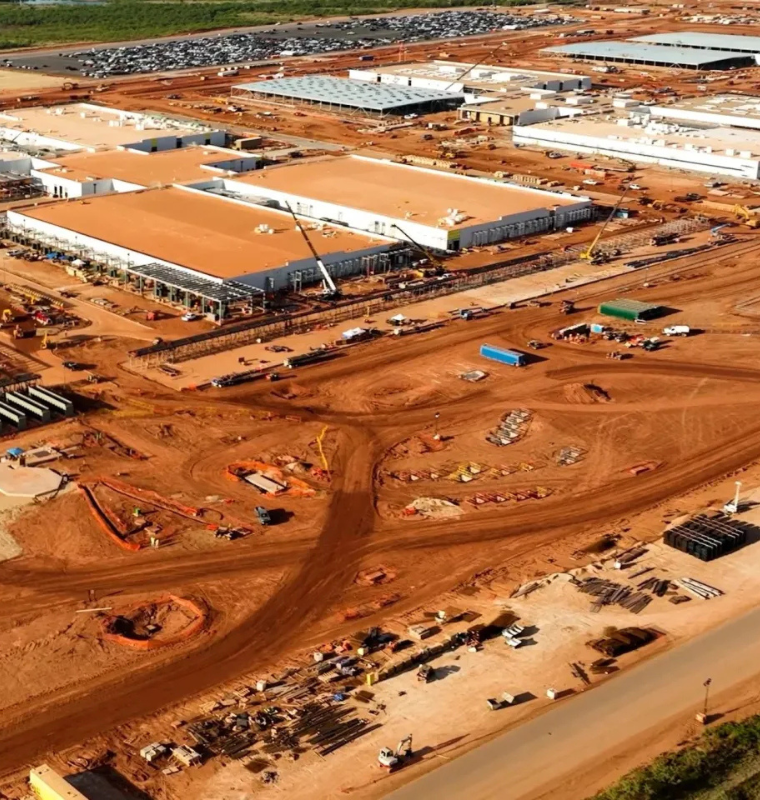India’s Data Center Boom Heats Up as Billionaires and Global Tech Giants Race for Market Share
India’s Data Center Boom Heats Up as Billionaires and Global Tech Giants Race for Market Share
By
Rachel Steinberg
Last updated:
October 3, 2025
First Published:
October 3, 2025

Photo: Bloomberg.com
A Digital Gold Rush in India
India’s data center industry is undergoing a historic transformation. The country currently has about 1.2 gigawatts of capacity, but reports suggest this will surge past 3 gigawatts by 2028, making it one of the fastest-growing markets in the Asia-Pacific region. This expansion is drawing in global tech leaders, Indian conglomerates, and even luxury real estate developers, all betting on India’s digital future.
In July, Google reportedly began talks with the Andhra Pradesh government to establish a 1-gigawatt hyperscale facility. Shortly after, OpenAI CEO Sam Altman revealed his company is exploring a similar 1-gigawatt AI-focused data hub in India. Such massive facilities represent a new era for the sector — where projects are no longer measured in megawatts but in gigawatts.
Who’s Competing for the Market
The competition is fierce, with more than 15 major players already in the race. Global giants like NTT, STT GDC, Equinix, and Princeton Digital are ramping up investments. Indian conglomerates such as Reliance Industries and the Adani Group are preparing multi-billion-dollar projects to secure market dominance.
- Reliance Industries is reportedly planning a 3-gigawatt mega data center in Gujarat with an investment between $20–30 billion.
- Adani Group, through AdaniConnex, aims to scale from less than 40 megawatts today to 210 megawatts soon.
- Real estate developers are pivoting: Hiranandani’s Yotta Infrastructure, Anant Raj Developers, and Panchshil Realty are rebranding themselves as digital landlords, with Anant Raj committing $2 billion for 300 megawatts by 2032.
This mix of tech firms, industrial giants, and property developers underscores how lucrative India’s digital economy has become.
Demand Drivers Behind the Surge
At the heart of this boom lies shifting demand patterns. According to Anarock Capital, enterprises currently make up 60% of data center clients, hyperscalers 30%, and AI workloads 10%. Within five years, hyperscaler demand is projected to rise to 35%, and AI workloads could expand to 20–25% of total demand.
Key drivers include:
- AI adoption: Workloads from companies like Microsoft, Amazon Web Services, and Google are pushing requirements from 25 MW facilities to 75–100 MW AI-ready campuses.
- Banking digitalization: Regulatory mandates requiring Indian financial data to stay within the country are fueling enterprise demand.
- E-commerce and cloud growth: Rising internet penetration and cloud adoption have created a second wave of demand.
As Equinix’s new AI-ready Chennai facility shows, operators are already pivoting to serve next-generation workloads.
Why India is Becoming a Data Hub
India holds several advantages compared to its Asia-Pacific peers. Countries like Singapore, Japan, and Australia already face land constraints and higher power costs, limiting new large-scale builds. By contrast, India offers ample land availability, relatively lower electricity costs, and a rapidly growing renewable energy sector that makes powering massive data centers more feasible.
Coupled with domestic digitalization, e-commerce growth, and new social media data storage rules, India has become a compelling long-term bet for global and domestic players alike.
Challenges on the Road Ahead
Despite the enthusiasm, India is a tough market to build in. Industry experts point to over 30 regulatory approvals required across different agencies, leading to delays. For example, U.S.-based Colt Data Centre Services purchased land in Mumbai in 2018 but only launched operations in 2024 with 22 megawatts live after years of red tape. To accelerate expansion, Colt partnered in a $1.7 billion joint venture with RMZ Infrastructure to add 250 megawatts across Navi Mumbai and Chennai.
Land acquisition poses another challenge. Litigation-free, large-scale plots are hard to secure, often slowing development timelines. Domestic developers sometimes act as intermediaries, purchasing land, resolving disputes, and then leasing or selling to international operators.
Additionally, analysts warn of the risk of oversupply and price wars. Compared with Indonesia, Indian pricing is already under pressure, as operators compete aggressively to win hyperscaler clients. Industry experts expect consolidation within 2–3 years as smaller players are squeezed out.
The Road to India’s Digital Future
Despite hurdles, the scale of planned investment signals India’s transformation into a global data infrastructure powerhouse. The market’s evolution from megawatts to gigawatts, driven by AI, hyperscalers, and domestic digitalization, is reshaping not only India’s tech landscape but also the global cloud ecosystem.
With billions of dollars pouring in and demand still rising, India’s data center industry is at a defining moment. For now, the race is wide open — but only those able to navigate regulations, secure land, and scale efficiently will emerge as winners in this digital gold rush.
Popular articles
Subscribe to unlock premium content
Why Consumers Buy Limited-Edition Fashion and Beauty Products

How K-Beauty Changed the Global Skincare Industry and Consumer Expectations

How Streetwear Became a Billion-Dollar Industry From Niche to Mainstream

Why Consumers Buy Limited-Edition Fashion and Beauty Products

How K-Beauty Changed the Global Skincare Industry and Consumer Expectations

Why Consumers Buy Limited-Edition Fashion and Beauty Products









